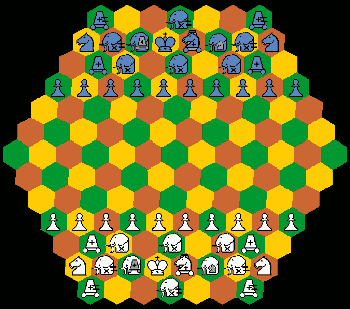

| Name |
Notation |
Number |
Move |
| King |
K |
1 |
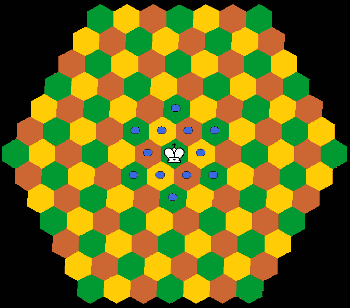 |
| Knight |
N |
2 |
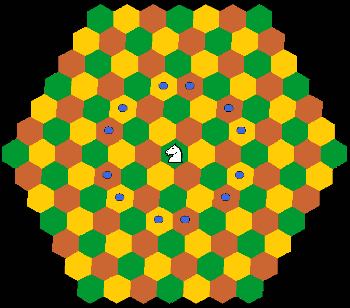 |
| Elephant |
E |
3 |
 |
| Oliphsnt |
O |
3 |
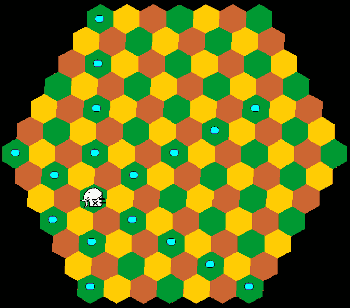 |
| WarMachine |
W |
2 |
 |
| BattleEngine |
B |
2 |
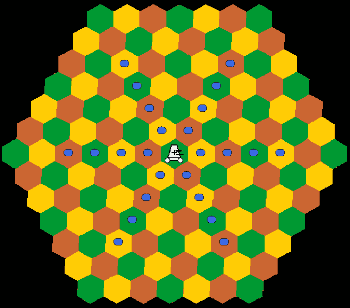 |
| HighPriestess |
H |
1 |
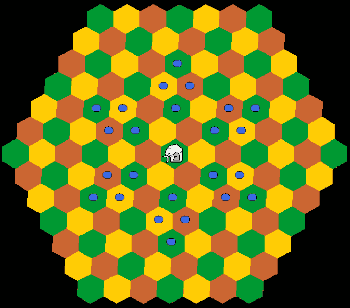 |
| Minister |
M |
1 |
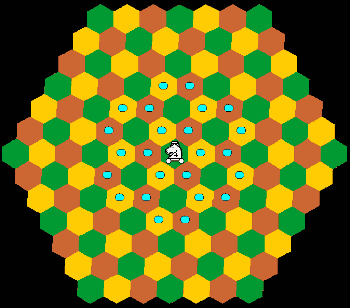 |
| JumpingGeneral |
J |
1 |
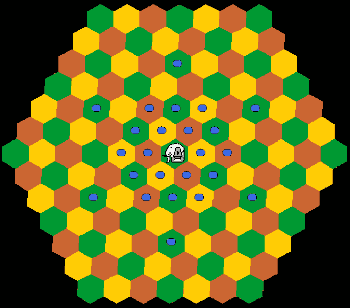 |
| Pawn | P |
10 |
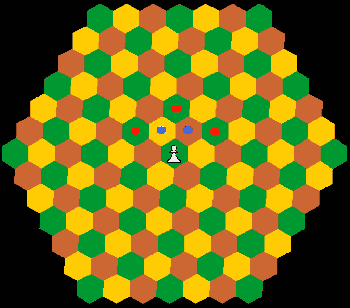 |
| Pawns
move without capturing by taking a single orthogonal step forward. In
the image on the right the pawn may move to the cells marked with a
blue dot, provided they are empty. When capturing a pawn takes a single diagonal step forward. The pawn in the diagram may thus capture on the cells marked by a red dot. There is no initial double move and thus no en-passent capture. |
|||
| Pawn Promotion |
 |
||
| Pawns promote on
reaching the 3 far-most ranks: ranks 11, 12, 13 for white; ranks 3, 2,
1 for black. The image on the right shows the promotion area for a white pawn with the cells marked by blue or white stars. The blue stars indicate cells where promotion is possible but not mandatory. The white stars indicate the cells where promotion is mandatory ( the far-most rank: 13 for white; 1 for black). Promotion is to any friendly captured piece or to a Guard. |
|||
| Guard |
G |
0 |
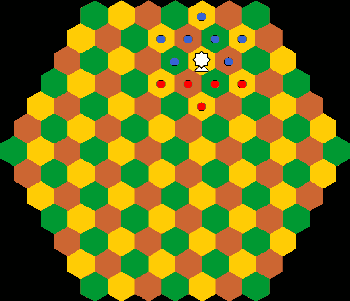 |
| Guards
are not present on the board at the start of a game but may appear
as the result of pawn promotion. Guards move one step in any direction, the same as the King, but may only exist within the promotion area. If moved outside of this area a Guard will revert to a Pawn, Thus in the right-hand image the Guard may move to any cell marked with a blue or red dot. The blue dots mark cells within the promotion area, so the Guard will remain a Guard. If moved to a cell marked by a red dot the Guard will become a Pawn as these cells are not within the promotion area. |
|||